Also available in PDF
To view PDF files, you need the Acrobat® Reader®.
2007 Annual Meeting Announcement
Feature: Coordinated Freeway and Arterial Operations Handbook
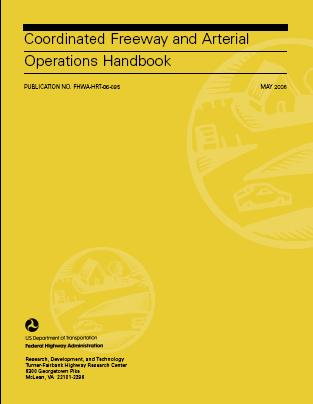 |
The Coordinated Freeway and Arterial Operations Handbook (May 2006, FHWA-HRT-06-095) is now available online. It provides direction, guidance and recommendations for transportation managers, engineers, and planners on how to proactively and comprehensively coordinate freeway and arterial street operations. See Feature Article.
The Transportation Management Center (TMC) Pooled Fund Study will have its 2007 Annual Meeting on August 14 and 15. The meeting will be held in Irvine, California at the Hyatt Regency Irvine Hotel. Representatives from 28 member agencies and the Federal Highway Administration (FHWA) will review study progress and discuss the TMC Pooled Fund Study business. The meeting has two full day's worth of presentations, information exchange, networking, and tours scheduled. Highlights from the draft agenda include:
The TMC Pooled Fund Study website ((http://tmcpfs.ops.fhwa.dot.gov) will contain additional details about this meeting. Travel reimbursement for one representative per member agency is authorized to attend this meeting.
Please direct any questions about the TMC Pooled Fund Study annual meeting to Ming-Shiun Lee (612-373-6335, ming_shiun_lee@urscorp.com), Raj Ghaman (202-493-3270, raj.ghaman@fhwa.dot.gov), or Tom Granda (202-493-3365, thomas.granda@fhwa.dot.gov).
Traffic congestion is increasing significantly throughout the United States. Congestion is increasing in rural areas and urban areas, in small cities, and large cities. The effects of congestion are captured in a number of measures and perceptions, including visible and consistent roadway congestion, the loss of personal and professional time, environmental degradation, and general traveler frustration - in essence, a reduction in overall mobility and accessibility. Further, the transportation community realizes there is no one proven way to fix the congestion problem and that a comprehensive approach of multiple congestion-reducing strategies is needed. One of these strategies is to operate the existing roadway system more efficiently or, in other words, to get more out of what already exists.
 |
Managing and operating freeways and adjacent arterials in a proactive and comprehensive manner, from a system user's perspective, is a major step toward operating all modes of the transportation system at maximum efficiency. The surface transportation system has been operated historically by separate entities with specific missions, goals, and objectives. These entities may have varying authority that may be either very limited or rather broad. In addition, responsibilities may overlap. Typically, the State government manages and operates freeway facilities and most major arterials and city or county governments manage and operate secondary arterials, collectors, and local streets. Furthermore, some functions, such as policing or emergency services, typically do not correspond with the agency that operates the roadway facilities. The result of this complex institutional arrangement is that the transportation system is operated from a single agency or facility-specific perspective, resulting in less than optimal operations when viewed from a system-wide perspective. It is this suboptimal system-wide perspective that motorists experience.
This challenge of operating freeways and adjacent arterial streets from a coordinated, system perspective was identified long ago. Many agencies have discussed ways to better coordinate their freeways and arterials, but few have actually implemented a comprehensive method for doing so. The reasons for this lack of communication and interoperability range from institutional barriers to technical challenges. Recent advancements in technology (i.e., centralized software systems, high-speed telecommunications, and interoperable Intelligent Transportation Systems (ITS) devices through common standards), coupled with improvements in institutional coordination (i.e., many regions now have multi-agency, regional-level ITS and traffic operations working groups), are now providing regions with the tools and abilities to create proactive plans and procedures for operating freeways and arterial streets in a coordinated manner.
Coordinated freeways and arterials (CFA) operations is the implementation of policies, strategies, plans, procedures, and technologies that enable traffic on freeway and adjacent arterials to be managed jointly as a single corridor and not as individual, separate facilities.
In the broadest sense, coordinated operations may be beneficial on any corridor that experiences recurring or nonrecurring congestion. In particular, CFA operations may improve travel in corridors experiencing motor vehicle collisions and incidents, construction and lane closures, special events, or recurring congestion. These sources of congestion lend themselves to four areas of opportunity to implement CFA operations:
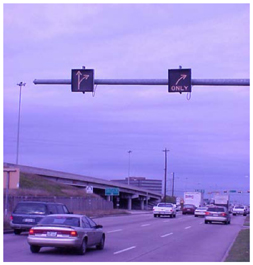 |
Each cause of congestion noted above presents its own unique challenges when it comes to managing traffic operations. However, CFA operations strategies can be applied to help overcome the congestion. In addition, combining CFA operations strategies with traditional traffic engineering and management approaches will further optimize safety and throughput in the corridor.
Many studies document the benefits of coordinating the operations of transportation systems. For example:
The purpose of the Coordinated Freeway and Arterial Operations Handbook (FHWA-HRT-06-095) is to provide direction, guidance, and recommendations on how transportation agencies can proactively and comprehensively coordinate freeway and arterial street operations. The first of its kind, this introductory handbook focuses on coordinating the operations of various types of facilities that typically are operated by separate organizations with separate missions. It also can assist with the advanced planning and management of travel on freeways and arterials with various kinds of congestion, such as high traffic volumes from special events or work zone-related lane closures.
This handbook is not just about using system management strategies to operate freeways and arterials more efficiently; rather, the focus of this guide is on operating freeways and adjacent arterials together in a coordinated manner that treats these roadways not as separate entities, but as an interconnected traffic operations corridor. This is how transportation users view and use these roadways. Users will often, for example, divert from a freeway to an adjacent arterial during a freeway incident because they realize the adjacent arterial will get them to their destination more efficiently in this scenario.
The 152-page handbook is divided into 6 chapters. Chapter 1 describes the purpose and objectives of the handbook and subject area, the definition and need for coordinated operations, and how to use this handbook. Chapter 2 provides a broad view of the planning-level activities recommended for the successful development of CFA operations examined at a regional level and a corridor-specific level. Chapter 3 details the recommended 11-step framework for the entire life cycle of coordinated operations for a specific corridor. Chapter 4 demonstrates how the corridor-level framework can be applied to incident management, work zones, special events, and daily recurring operations. Chapter 5 presents concepts and technologies that will enhance the efficiency of coordinated freeway and arterial operations. Finally, Chapter 6 presents practical applications of the CFA process and demonstrates the potential of ITS technology to enhance corridor operations.
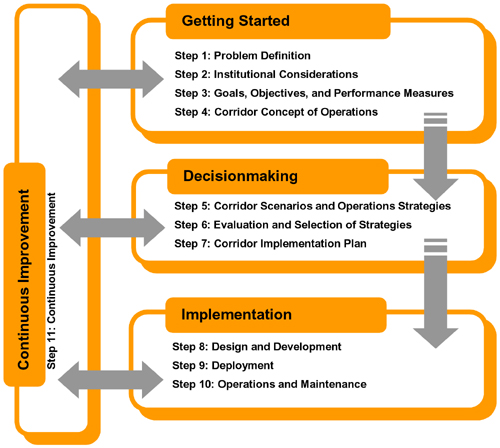 |
Coordinated Freeway and Arterial Operations Framework |
The handbook's audience is the team of individuals that is involved in or responsible for the planning, coordination, management, or operation of traffic on freeway and arterial facilities (e.g., managers, supervisors, engineers, planners, or technicians that are involved with legislation, policy, program funding, planning, design, project implementation, operations, or maintenance). The handbook is available on the TMC Pooled Fund Study Web site at http://tmcpfs.ops.fhwa.dot.gov/cfprojects/new_detail.cfm?id=48&new=0.
Ongoing TMC Pooled Fund Study projects are briefly described in the following paragraphs. A complete quarterly project progress report can be accessed on the TMC Pooled Fund Study Website: http://tmcpfs.ops.fhwa.dot.gov.
"Developing and Using Concept of Operations in Transportation Management Systems"
Purpose: Develop a document that describes the need for a concept of operations for a transportation management system and provides technical guidance and recommended practices for developing and using a concept of operations throughout the system's life cycle.
"Transportation Management Center Business Planning and Plans Handbook"
Purpose: Produce a handbook that provides guidance and best practices on how to develop a TMC business plan. The handbook will also outline business-planning models that were successfully employed by transportation agencies to ensure the long-term sustainability of TMCs and associated ITS applications.
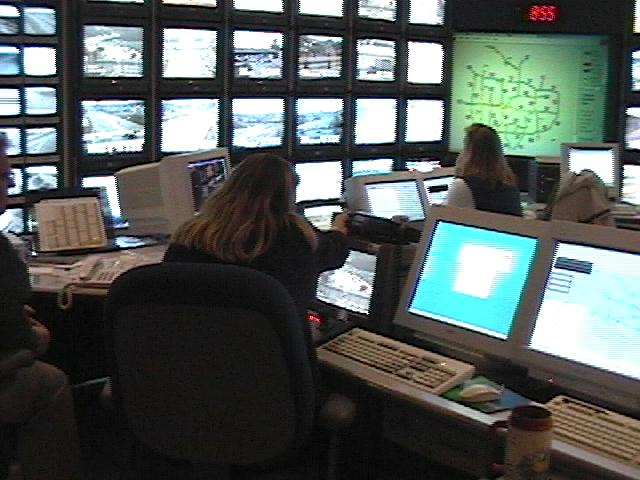 |
"TMC Performance Monitoring, Evaluation, and Reporting Handbook"
Purpose: Develop a handbook that explains the need for performance monitoring and provides guidance and recommended monitoring practices. The handbook will advise how to initiate, sustain, and use information generated from monitoring, evaluating, and reporting on TMC performance and describe roles, responsibilities, functions, and support services as they relate to traffic management.
"Regional, Statewide, and Multi-State TMC Concept of Operations and Requirements"
Purpose: Building off the existing Developing and Using Concept of Operations in Transportation Management Systems Handbook, this project will develop a document that will provide detailed guidance on how to develop and use concept of operations and system requirements as it applies to the life cycle of a regional, statewide, or multi-state TMC.
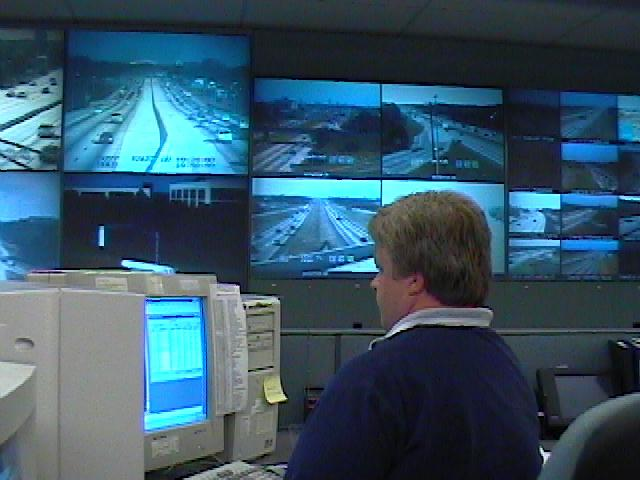 |
"Recovery and Redundancy of TMCs"
Purpose: Develop a technical document that will synthesize current practices and state of the practices, highlight technical issues, lessons learned, and recommended practices, and detail how to plan, develop and implement redundancy design and recover plans for TMCs and transportation management systems.
"Procuring, Managing, and Evaluating the Performance of Contracted TMC Services"
Purpose: Develop a technical document that will provide guidance and recommended practice to TMC owners and managers in making decisions related to outsourcing portions, or in entirety, of their TMC or transportation management system operation to a private contractor or contractors.
"Driver Use of Real-Time En-Route Travel Time Information"
Purpose: Assess impacts of enroute real-time travel time/delay/speed information on drivers; define the most effective way to provide en-route real-time travel time information; and develop preliminary guidance to practitioners for delivering en-route travel time information.
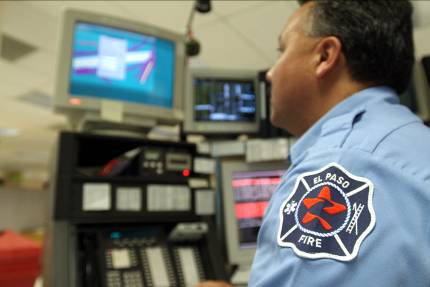 |
"Integration of TMC and Law Enforcement: Needs Assessment"
Purpose: Assess the current practices and identify issues, needs, and challenges that all involving agencies are facing in integrating TMCs and law enforcement. The results of this effort will lead to identification of a list of topics and issues to be addressed and a series of next steps to be considered in a further study that is intended to develop a product to provide necessary guidance to address agencies' needs.
"TMC Clearinghouse Support Services, Phase 2"
Purpose: Enhance and improve the support services for the TMC clearinghouse website that will be available online in Spring/Summer 2006. The study will also evaluate consumer feedback and recommendations for enhancing and improving the features and contents of the clearinghouse.
"Methodologies to Measure and Quantify TMC Benefits, Phase 1"
Purpose: Gain a better understanding of and to quantify benefits in traffic operations due to the implementation of TMCs and the systems, infrastructure, and functions associated with their operations. Phase 1 of the project will synthesize methodologies for measuring, quantifying, and evaluating costs and benefits of TMCs, as well as assess the feasibility of developing a software tool for quantifying TMC benefits.
"Developing Travel Time Information"
Purpose: Synthesize the state of the practice, successful stories, and lessons learned as well as develop a technical document that provides guidance and recommended practices on the concepts, methods, techniques, and procedures for TMCs to collect, calculate, and predict travel time information.
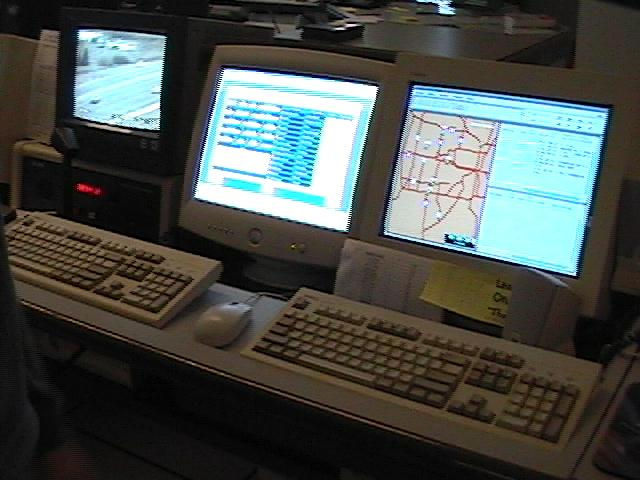 |
"Requirements and Position Descriptions for TMC Support Staff"
Purpose: Build off information already compiled for operators in a previous effort and compile the needed information related to KSA's for other tasks and services required to support TMCs.
"Techniques for Managing Service Patrol Operations"
Purpose: Identify and synthesize current best practices, state of the practices, and models and innovative techniques for managing service patrol operations.
"Best Practices for Road Condition Reporting Systems"
Purpose: Synthesize current best practices and state of the practices in planning, design, and operation of road condition reporting systems as well as in integrating such systems with other road weather information/ management systems.
"TMC Infrastructure Maintenance Management System"
Purpose: Develop a software system to assist TMCs with managing infrastructure maintenance activities. Approach includes performing an assessment on available software/systems and agencies' experience. A requirements analysis will be followed to identify desired system functions and capabilities.
"TMC Human Factors Design Guidelines: Requirements Analysis"
Purpose: Perform a requirements analysis to identify and prioritize needs for human factors guidance in TMCs. Approach includes a workshop with 5 to 10 TMC subject matter experts to identify and prioritize the key areas where human factors guidance is most needed. Based on analysis of the workshop results, an approach will be identified for the development of a guidelines document that will best support the identified user requirements.
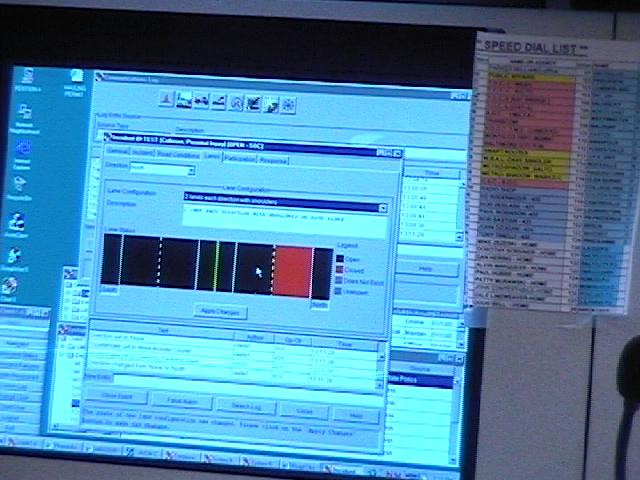 |
"TMC Staffing & Scheduling for Day-to-Day Operations, Phase 2: Software Development"
Purpose: Build upon previous effort and develop an interactive software tool that TMC managers, supervisors and human resources personnel can use to quickly and easily assess available staffing resources and needs, perform the workload analysis, and make scheduling and shift operation decisions for immediate and future needs.
"Developing TMC Operator Training Program Guidelines"
Purpose: Develop training and capacity building guidelines for TMC operators. These guidelines will include outlines of training modules. Processes for certification and re-certification for different operator positions will be analyzed. The project will also develop recommendations for the National Highway Institute to develop a comprehensive training program.
"Knowledge Needs Assessment and Workshops for TMC Owners, Managers and Operators"
Purpose: Conduct a comprehensive assessment on knowledge needs for TMC owners, managers and operators to effectively and efficiently perform their day-to-day tasks. The project will also identify issues and needs and outline strategies and recommended initiatives to address the needs and issues.
 |
"TMC Data Capture for Performance and Mobility Measures"
Purpose: Synthesize best practices and lessons learned related to collecting and archiving TMC operation data for monitoring, evaluating and reporting performance and mobility measures at system levels as well as for specific scenarios or locations.
Agencies may join the TMC Pooled Fund Study at anytime during the year by committing funds at a level agreed upon by existing participants in the study. The TMC pooled fund study was approved for 100 percent State Planning and Research Program funding. Any noncommercial agency or organization that is responsible for the management and operation of any portion of the surface transportation system is welcome to participate.
State transportation agencies interested in joining the TMC Pooled Fund Study can submit funding commitment online at the Transportation Pooled Fund Program web site at: http://www.pooledfund.org. (see Solicitation No. 870; SPR-2(207))
Other agencies should complete and submit the TMC Pooled Fund Study commitment form downloadable at the TMC Pooled Fund Study web site at: http://tmcpfs.ops.fhwa.dot.gov.
July 10-12, 2007 |
TRB Traffic Signal Systems Committee Summer Meeting, Woods Hole, MA |
July 23-25, 2007 |
TRB Regional Transportation Systems Management and Operations Committee Summer Meeting, Woods Hole, MA |
August 5-8, 2007 |
ITS Annual Meeting and Exhibit, Pittsburgh, PA |
August 14-15, 2007 |
TMC Pooled Fund Study Annual Meeting, Irvine, CA |
October 7-10, 2007 |
National Rural ITS Conference, Traverse City, MI |
October 9-13, 2007 |
14th World Congress on ITS, Beijing, China |
"Testing Programs for Transportation Management Systems" (February 2007, FHWA-HOP-07-088) - This handbook provides direction, guidance, and best practices for test planning, developing test procedures, and test execution for the acquisition, operation, and maintenance of transportation management systems and ITS devices. This technical handbook is available at: http://ops.fhwa.dot.gov/int_its_deployment/standards_imp/tptms.htm. For a non-technical audience, A Primer (FHWA-HOP-07-089) that identifies key aspects of testing, identifies the benefits of developing and using testing programs, and profiles successful practices of existing programs, is available at: http://ops.fhwa.dot.gov/publications/tptms/primer/index.htm
"Five Year ITS Program Plan" (May 2007, FHWA-JPO-07-015) - This plan documents the program's goals, organization, and changes over time. It describes current activities and investments planned for the next five years. This Program Plan is both a "snapshot" of the present program and a roadmap for the near-term future. The program's reorientation created a more focused, cutting-edge research plan for maximizing ITS applications for decreasing congestion in urban areas; reducing the number of crashes, deaths, and injuries on our Nation's roadways; and improving the operations and accessibility of our transportation infrastructure for all users. Available at: http://www.itsdocs.fhwa.dot.gov//JPODOCS/REPTS_TE//14289.htm.
"ITS/Operations Resource Guide 2007" (May 2007, FHWA-JPO-07-017) - This guide provides a comprehensive listing of over 400 documents, videos, websites, training courses, software tools, and points-of contact related to ITS and other innovative transportation operations strategies. Most resources have been developed under Federal sponsorship, but other useful resources are also included. Available at: http://www.itsdocs.fhwa.dot.gov//JPODOCS/REPT_MIS/14353.htm.
"Integrated Corridor Management Concept Development and Foundational Research - Task 3.4 Identify Integrated Corridor Management Institutional Strategies and Administration" (June 2007, FHWA-JPO-06-037) - The focus of this document is "institutional integration" and the associated issues. In more specific terms, the objective of subtask 3.4 is to identify and analyze generic institutional strategies for Integrated Corridor Management (ICM); to identify the corresponding participating institutions and the stakeholders; and to address the administrative processes and requirements. Available at: http://www.itsdocs.fhwa.dot.gov//JPODOCS/REPTS_TE//14276.htm.
"Committee for a Study of Options for Streamlining Standards for Intelligent Transportation Systems Letter Report" (June 18, 2007) - TRB's Committee for a Study of Options for Streamlining Standards for ITS has delivered a letter report to the U.S. Department of Transportation's (USDOT's) ITS Joint Program Office. The letter report examines the federal role in developing and deploying ITS standards. It recommends that USDOT continue to play a prominent role in support of ITS standards but one that is guided by a well-articulated strategic vision and program plan. USDOT is advised to engage users of standards in all phases of standards development and to become more active in international ITS standards activities. Available at: http://onlinepubs.trb.org/onlinepubs/reports/standards_its_june_2007.pdf.
"National ITS Architecture Version 6.0" (May 2007) - The currently available version of the National ITS Architecture, addressing 33 user services, is dated May 2007. The principal changes include increasing consistency with the Vehicle Infrastructure Integration (VII) initiative, added support for additional DSRC applications and updates addressing CVISN, the Clarus initiative, the Border Information Flow Architecture, transit and incident management standards. Work is ongoing to develop Turbo Architecture Version 4.0 to fully support the new National ITS Architecture Version 6.0 and provide enhancements. Turbo Architecture Version 4.0 is expected to be available in October 2007. The National ITS Architecture can be accessed at: http://www.iteris.com/itsarch/index.htm.
Wisconsin DOT Makes Madison Area Traffic Cameras Available to General Public - Madison area commuters now have a new tool to help them navigate the Beltline and other key Dane County travel corridors: a new Web site that connects users to a network of 22 video cameras that monitor traffic volumes and conditions via images that are updated every three minutes. The Wisconsin DOT has overseen installation of the necessary cameras, fiber optics and other infrastructure to provide for more timely response to incidents, and now are able to make the Madison-area video images available to the general public at: http://www.dot.wisconsin.gov/travel/road/.
Washington State DOT's New Cameras Bring a Clearer Picture of Puget Sound Traffic - The Washington State DOT (WSDOT) has added 16 new cameras to the traffic maps at http://www.wsdot.wa.gov/traffic/seattle. The cameras provide a clearer picture of Puget Sound traffic. The advance information helps drivers make choices before they hit the road. WSDOT has also made traffic maps and cameras available for many Web-accessible cell phones at http://www.wsdot.wa.gov/small.
Missouri DOT Launches "Map My Trip" Web Travel Tool - The Missouri DOT (MoDOT) has made avilable a new tool to help find alternate routes around highway closures in the St. Loius area, especially along the I-64 reconstruction project. Map My Trip is a web-based travel information tool that will help motorists avoid construction related closures in the area. Travelers can visit http://www.modot.org/stlouis and click on the Map My Trip feature.
Michigan DOT Launches New Traffic Data Web Site - The Michigan DOT (MDOT) and the state's Department of Information Technology (DIT) launch a new Web site designed to keep motorists informed about traffic and construction on state highways. Known as "MI Drive" (http://www.michigan.gov/drive), the new site consolidates data from a variety of MDOT sources, including: lane closures, construction projects, and traffic cameras in Detroit and Grand Rapids. MDOT noted that the web site is part of an ongoing effort to make Michigan highways safer and easier to drive by providing user-friendly information for Michigan motorists.
|
TMCUpdate is a quarterly newsletter produced by the Transportation Management Center (TMC) Pooled Fund Study. This quarterly publication highlights major TMC Pooled Fund Study activities and achievements and shares TMC related news and resources. Reproduction (in whole or in part) and broad distribution of this newsletter is strongly encouraged. The TMC Pooled Fund Study invites inquiries about articles and suggestions for TMC developments and advancements to be covered in future issues. For more information, please contact the Program Administrators, Raj Ghaman at Tel: 202-493-3270, E-mail: raj.ghaman@fhwa.dot.gov; or Tom Granda at Tel: 202-493-3365, E-mail: thomas.granda@fhwa.dot.gov; or the newsletter editor, Ming-Shiun Lee at Tel: 612-373-6335 or E-mail: ming_shiun_lee@urscorp.com. |